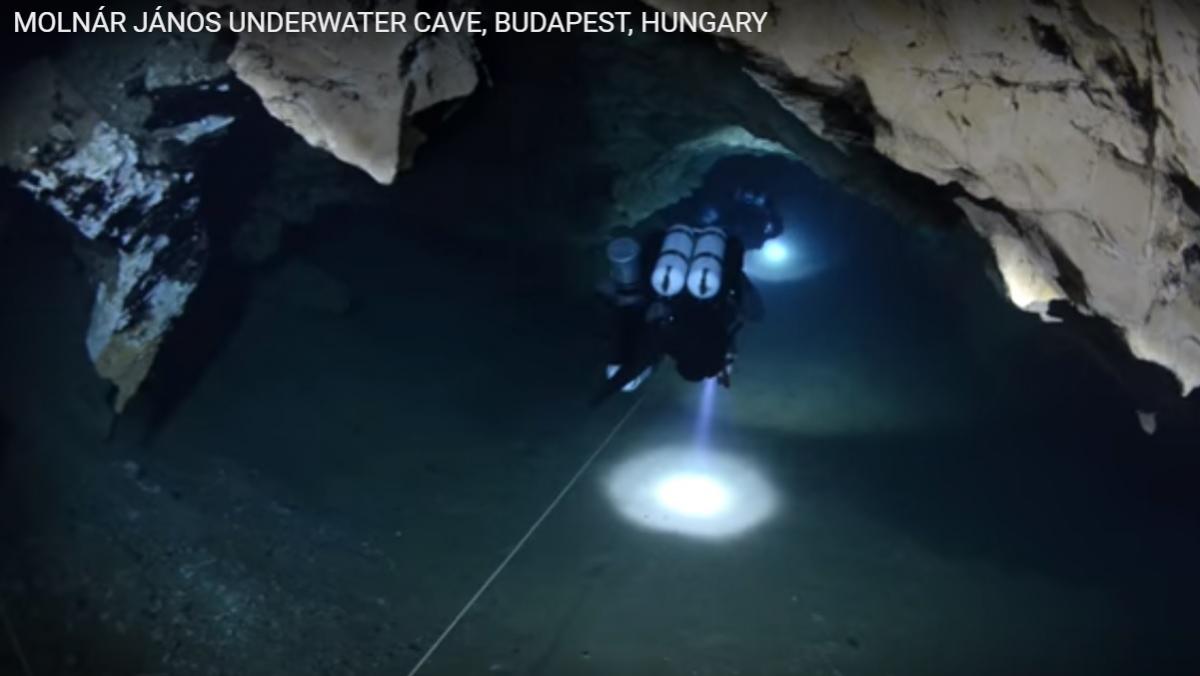2016. September 30.
The researchers of ELTE and BME started an unusual co-working to get more information about the Cave János Molnár.
The experts of the two universities commenced the preparation of the cooperation, and now they are beyond the second meeting and going to continue the workshops on the discovery of the cave during the autumn. After the first meeting in ELTE, in July BME invited the researchers of the other university to a workshop, where they could report their results.
From the Faculty of Civil Engineering Gyöngyi Karay is one of the researchers, who is dealing with Cave János Molnár, and takes part in this cooperation too: „I dealt with seepage and underground water movement as a university student and I started to research Cave János Molnár last year. We have surprisingly few information about the cave, this is the reason for the importance of this cooperation with the researchers of ELTE – they have different type of literature, it makes easier the advancement.”
The discovery of the cave is still in process, so it is not known how it is connected to the other caves of Budapest. The previous researches of Gyöngyi dealt with water movements in fractured rocks, and now she is modelling Cave Molnár János.
Dr. Dénes Szieberth is the researcher of BME Faculty of Chemical Technology and Biotechnology and can contribute the researches as a diver too. He deals with the Cave for years, even worked on the restoration of it, over that he redounds getting more information about the thermal water of the Cave with sampling.
On the workshop over modelling and chemical measurements, samplings researchers talked about hydrological measurements. At this moment it seems that rainfall does not leak info the karst of the Cave, but divers did not finished the discovery of the extended cave system, so the optional connection with the other cave systems is not mapped.
The program was opened by Dr. Géza Hajnal the deputy head of the Department of Hydraulic and Water Resources Engineering with a welcome speech and also finished with some final thoughts. The detailed program can be found here.
Next workshop is planned during the autumn, organized by Dr. Dénes Sziebert. The further plans are the following: making the Lukács Thermal Bath, which partly uses the thermal water of the Cave, interested in the researches, contact with the Ministry of Interior and make a thematic issue about the Cave (planned for next year). The possible tracer license for the divers and the supplement of Cave model made by Gyöngyi Karay with the regional flow model also helps the further discovery. The common database makes cooperation easier, so this is also a plan for the near future.
|
János Molnár Cave Thanks to the wonderful catch of the divers anyone can look into this beautiful Cave without diving license: (Video is available by clicking on the photo.) Even many local residents do not know the existence of the great Cave system at the foothills of József-hegy, which is the part of the Thermal Karst of Buda. The Cave is the water passage of the sources feeds Malom-tó, which is the fifth part of the huge Cave systems of Rózsadomb, but the only active one. Most of the system is underwater, so it is approachable only for divers. It gets the hot water from the depth and the cold water from the karst water comes from Buda hills. The cave got its name from that chemist, who started to discover the cave system during the 1850’s. He explored the anhydrous parts and presumed the underwater cave system. Also analysed the water of the cave. The cave was researched from the 1930’s, but the most important discovery was in 2002, when divers reached the biggest thermal underwater dome-shaped hall of the world (its 20-25 metres high and now partly over water level). This hall was opened in 2008 with drilling, but at the moment it is not open for any visitors, only with permission. As the result of the continuous discovery the known length of the system is 6 kilometres and its depth is 80 metres underwater. But it is sure, that the whole system is bigger, because there are more points, where diver cannot get further, because the limit of the human potential and the diver technological possibilities. The discovery of the János Molnár Cave has a great scientific importance, because the emergence of the thermal water cave systems could be searched perfectly through an active system. |
The participants of the workshop:
Left to right: Dr. Géza Hajnal, Dr. Judit Mádlné Szőnyi, Petra Bodor, Katalin Csondor, Gyöngyi Karay, András Rehák
Left to right: Dr. Géza Hajnal, Dr. Judit Mádlné Szőnyi, Petra Bodor, Katalin Csondor, Dávid Farkas, András Rehák

